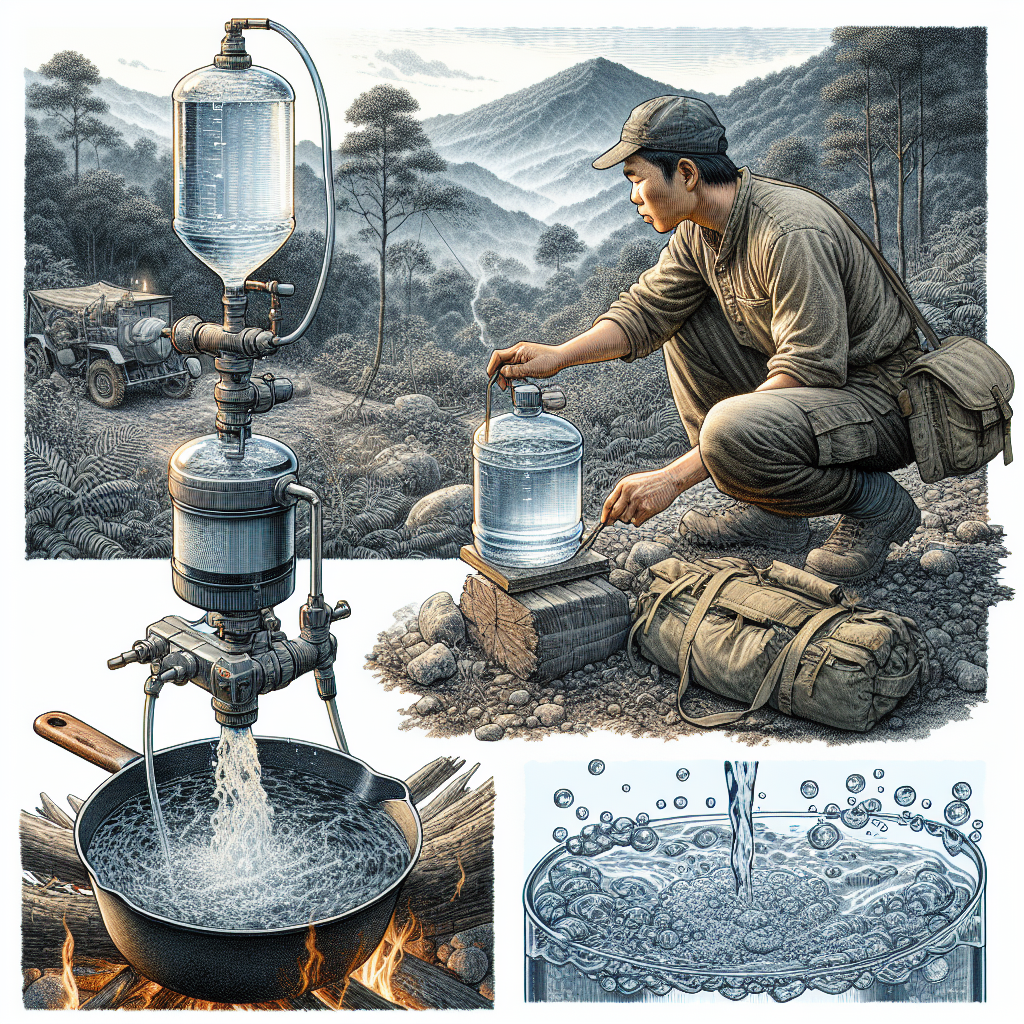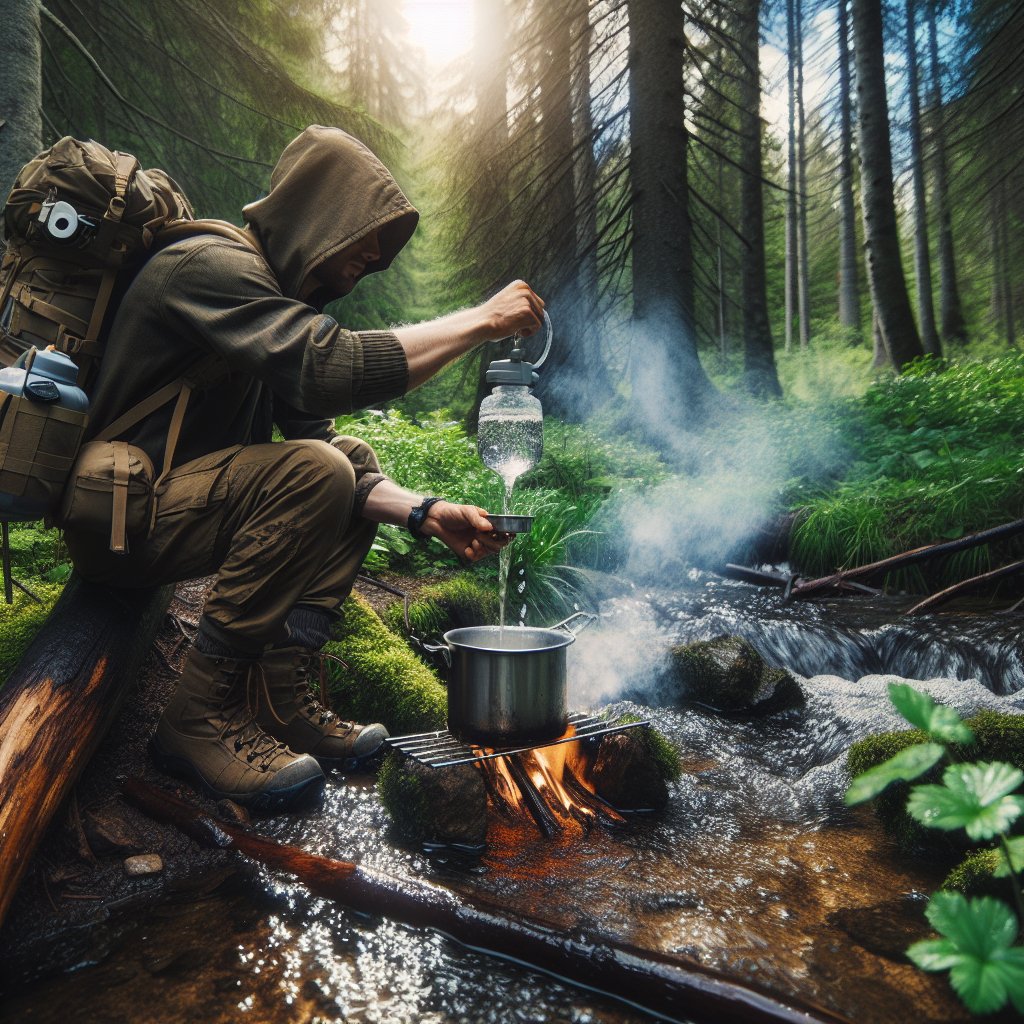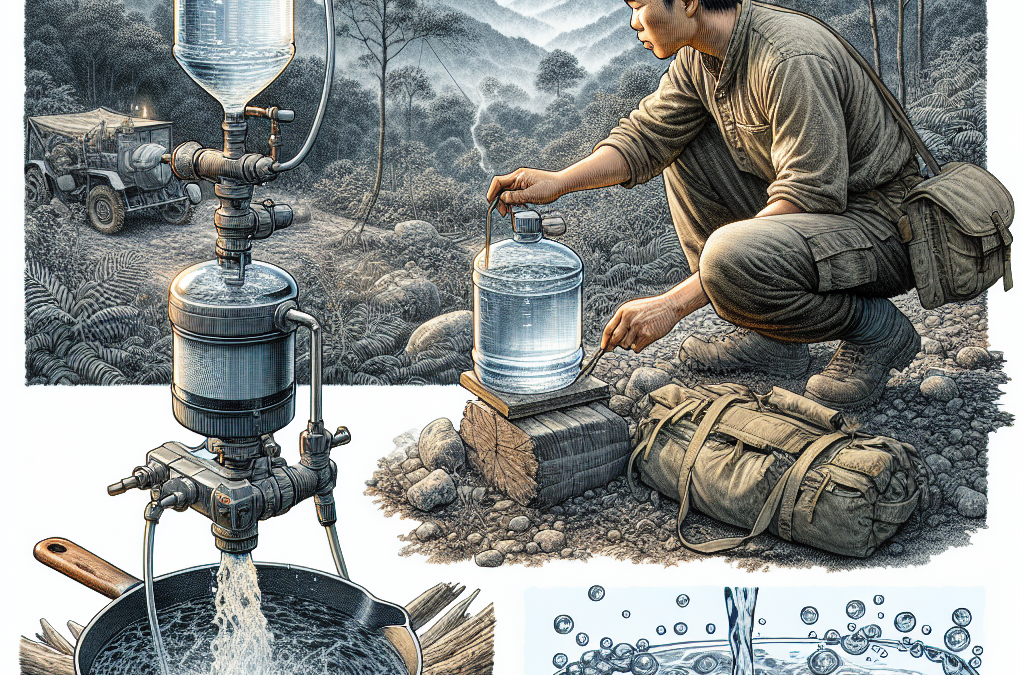Setting off on your next grand adventure into the wild? Ensuring you have access to clean, drinkable water is perhaps one of the most important survival skills. “Hydration and Water Purification in the Wild” equips you with crucial knowledge on maintaining hydration and effectively purifying water in challenging environments. From understanding the role of hydration in your body’s function, to mastering various water purification methods, this detailed guide has got you covered!
Understanding the Importance of Hydration
Proper hydration is the foundation of good health and more so when you find yourself in the wilderness. Water is fundamental for our survival as it performs multiple roles, from acting as a building block in body cells to regulating body temperature, lubricating joints, and aiding in digestion.
Why water is critical for survival
Your body is made up of about 60% water, which justifies why you need to stay hydrated. Without water, your body would be unable to balance its temperature, transport nutrients, or even allow cells to grow and survive. In the wilderness, where physical activities may be intense and weather conditions adverse, the need for water intake increases even more.
Effects of dehydration on the body
Dehydration can be detrimental to your health and overall survival. It can affect your physical performance, making physical activity feel harder than it should. If it becomes severe, it can lead to dizziness, confusion, and exhaustion. Dehydration in the long term can cause severe health problems like kidney stones, urinary tract infections, and even a decline in cognitive function.
Signs and symptoms of dehydration
Being in tune with your body is crucial, especially when you’re in the wilderness. Early signs of dehydration include feeling thirsty, imbued by a dry mouth, fatigue, and smaller amounts of dark, strong-smelling urine. More severe signs include not peeing or having very dark urine, headaches, dizziness, nausea, and feeling lethargic. If left untreated, dehydration can be critical and life-threatening.
Natural Water Sources in the Wilderness
Walking around in nature, you may see various sources of water. This availability of water may differ vastly depending on the area and season.
Streams, rivers, and lakes
These are generally visible, easily accessible, and offer a somewhat reliable source of water. But refrain from drinking water straight from these sources without proper purification.
Rainwater collection
Collecting rainwater is a fantastic method when available but bear in mind that the collected still needs some purification.
Melting snow and ice
Snow and ice are convenient sources of water if you are in a colder climate. But they must be melted before drinking to avoid the risk of hypothermia.
Underground water sources
Underground water sources like natural springs are often safer if they have not been contaminated with surface pollutants. Still, purifying the water is necessary.

Hazards of Drinking Untreated Wild Water
It may seem clear and harmless, but untreated water sources in the wilderness can be loaded with unseen hazards.
Biological contaminants
These include bacteria, viruses, and parasites that can cause illnesses like dysentery, typhoid, and cholera.
Chemical pollutants
Some water sources may be contaminated with toxic chemicals, either naturally occurring or due to human activities.
Physical hazards
Sediments, suspended particles, and other physical substances can contaminate water and render it unsafe, not to mention the harm they can cause to your digestive tract.
Basic Water Purification Techniques
There are several methods that you can use to purify your drinking water. These techniques are simple yet effective.
Boiling
Boiling water is the most tried and true method of water purification. Heat it to a rolling boil for at least one minute to kill most pathogens.
Distillation
Distillation is an effective method for removing contaminants but may not be convenient in a survival situation due to the equipment necessary.
Use of Iodine tablets
Iodine tablets are light, portable, and effective against many pathogens but may give water an unpleasant taste and should not be used by pregnant women or people with thyroid issues.
Solar disinfection
Solar disinfection, or SODIS, uses sunlight to inactivate bacteria, fungi, and viruses. Fill a clear plastic bottle with water, cap it and let it stand in the sun for at least six hours.

Advanced Water Purification Methods
Harnessing the power of technology, these advanced water purification methods can help ensure your drinking water’s safety.
Use of Portable water filters
Portable filters like straw-style filters, squeeze filters, and pump filters, can physically strain out most pathogens and contaminants.
Use of Ultraviolet (UV) light
UV light sterilizers can kill viruses, bacteria, and protozoa, but they require batteries, making them less ideal for long-term wilderness survival.
Reverse osmosis purification
Pressure is applied to force impure water through a semipermeable membrane, which removes most impurities. However, this method requires special equipment.
Use of chlorine dioxide tablets
Chlorine dioxide tablets are highly effective but can leave an unpleasant taste in the water.
Evaluating Water Quality in the Wilderness
Before drinking, it’s important to evaluate the condition of the available water source to determine its purity and safety level.
Visual inspection
Clear water is better than cloudy. Stay away from stagnant water, as it might contain harmful microbes.
Smell testing
An unusual smell can point towards the presence of contaminants. However, lack of smell doesn’t guarantee safety.
Taste factors
Water that tastes different, especially metallic or bitter, may be unsafe for consumption.
Health reactions
Keep tabs on how you feel after drinking water. Symptoms like stomach upset, nausea or diarrhea can be signs of contaminated water.
Best Practices for Hydration in the Wilderness
Hydrating in the wilderness requires more than merely drinking water when you feel thirsty.
Establishing a consistent drinking schedule
Stick to a consistent drinking schedule, even if you’re not thirsty. Doing so can prevent dehydration.
Recognizing thirst as a late sign of dehydration
By the time you feel thirsty, you may already be dehydrated. So, don’t wait until you’re thirsty to drink water.
Preemptive hydration before physical activity
Drink plenty of water before embarking on strenuous activities to avoid dehydration.
Essential Hydration Gear for Wilderness Survival
The proper gear can ease the process of sourcing and purifying water, making it essential for wilderness survival.
Water bottles and hydration packs
A durable water bottle or hydration pack is a must-have as it can help you carry water safely.
Portable drinking water filters
These are lightweight, compact, and can filter out a majority of water pollutants, making them an essential survival tool.
Hydration tablets and electrolyte solutions
These can help replace lost electrolytes, especially during periods of intense physical activities where sweating is high.
Water purification tablets / solutions
These are lightweight, compact and effective in eliminating many pathogens.
Emergency Water Sourcing and Purification Methods
During a survival situation it’s vital to understand emergency sourcing and purification methods.
Transpiration method with a plastic bag
This method entails attaching a plastic bag to a leafy green tree branch to collect the water released by transpiration.
Solar stills
Solar stills leverage the evaporation and condensation process to purify water.
Charcoal water purification
A homemade charcoal filter can be used to purify contaminated water.
Using stones to boil water
If you don’t have a pot, hot stones can be used to boil water.
Maintaining Hydration and Purification Knowledge
Staying hydrated in the wilderness is a science that one needs to fully understand and frequently practice.
Frequent practice of methods
With experience comes proficiency. So, it is necessary to practice and perfect these water sourcing and purification techniques.
Updating yourself with scientific advances
Keeping up with the latest scientific advances can be beneficial when sourcing and purifying water in the wilderness.
Understanding regional differences in water quality and access
Understanding geographical differences in water quality can help you to better prepare for your wilderness survival.
Surviving in the wilderness means being prepared. Knowing how to properly hydrate and purify water can significantly enhance your wilderness survival skills and increase your chances of surviving. Remember, clean and safe water is key to not just survival, but good health too, whether in the wilderness or not. Always prioritize hydration in your survival skills arsenal.

